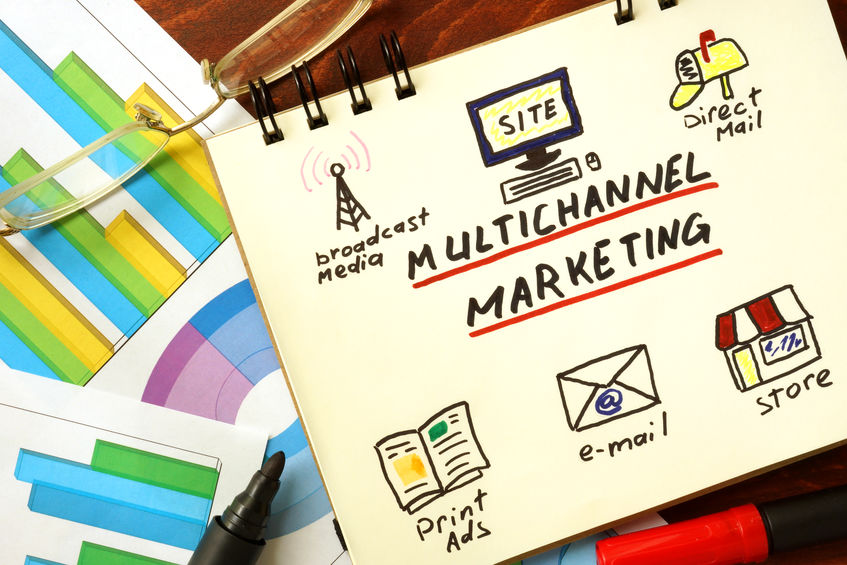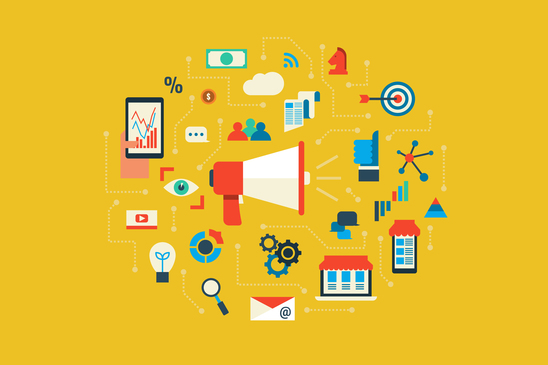
There are four categories of media that help shape and define multichannel marketing—an essential strategy to use to expand marketing outreach. While 95 percent of marketers say they know how important multichannel marketing is for reaching their target audiences, only 73 percent say they have a multichannel program in place.
Most marketing professionals know it’s important to utilize a mix of content formats to engage prospects and customers at different stages of the buyer’s journey. The types of content that generate the best results for your organization depend on several factors. These include the nature of your business, demographics of your target audience, organizational goals and available resources. To understand how to leverage your content for the best ROI, consider which type of media it is intended for and how it can be shaped and shared across multiple media channels. Here are the four main types of marketing media.
Marketing Media

- Owned media is any content developed by your company, for your company. It is proprietary in nature and shared via platforms or locations that you also own. For most companies, website content is the most abundant form of owned media. It includes the website copy and design itself, in addition to blog posts, videos, podcasts, e-books, white papers, guides and infographics. It also includes sales materials such as brochures, product catalogs or internal and external newsletters. Owned media is the foundation of content marketing and creates the basis for media outreach. Your owned media will shape and influence other types of media. The priority of owned media is to share your company’s valuable expertise.
- Paid media involves any content where the output or placement is paid for by your organization. This includes advertising in print magazines or newspapers, TV, radio, billboards or social media. In addition, paid media can include platforms in digital spaces such as search engines, paid affiliate programs and sponsored content. While many think that paid media is just for B2C companies, it isn’t. In fact, 60 percent of large B2B companies use paid ads in their marketing mix. The key here is to make sure the messaging appeals to your target audience and that the placement reaches them on the platforms they use.
- Earned media is content created by someone else about your company that you didn’t pay for. Press coverage is likely the first type of earned media that comes to mind. Whether that coverage is a press release picked up by the media outlets you contacted or interviews by reporters appearing in publications, radio or TV, it boosts your visibility and name recognition. But press coverage is not the only form of earned media. Earned media also includes awards, client reviews and testimonials, and being featured in articles or lists from other companies. It’s one thing when your organization shares value, expertise or promotion. It’s even more powerful coming from places other than your company website and social profiles. According to Demand Gen’s 2019 report, 92 percent of B2B buyers give the most credence to peer reviews and user-generated feedback. When another company or individual endorses the results and experience of working with you, your reputation increases in value.
- Shared media is a relatively new form of media that allows you to reach new audiences and interact with those audiences directly. It has two subcategories. First, it can represent media shared by two organizations, such as a co-hosted webinar or a podcast interview. Second, it can be media that is shared on social networks. In both cases, shared media usually overlaps with the previous three types of media. It may even be identical or linked to owned, paid or earned media. Because of social media’s prevalence and specific platform functions and limitations, handle shared media slightly differently. Platforms like Facebook, Twitter, LinkedIn, Instagram and Pinterest all share content in different formats and have different audiences. While you may simply be sharing a link or reposting blog content on social media channels, it is important to adjust content to ensure it is click-worthy and shareable. Instagram and Pinterest favor graphics, while Twitter favors the short form. Research the trends and preferences of each platform and their correlating audiences.
Multichannel Marketing Strategy

Marketing expert Christopher Penn explains how the four types of media overlap. He says the type of media is defined by what we do with it, not necessarily because of what it is. “At the end of the day, I’ll be so bold as to say media is media,” Penn says. “What we do describes it. If I put an infographic or an article on a flash drive—just the content, no navigation or attribution—can you tell me if it’s paid, owned, earned, rented, or shared? You can’t. It’s just text, a graphic, a sound file, or a video… If I use native ads to promote an earned piece and that ad appears on my website because I’m part of a DSP [demand-side platform] network and I want to retarget my visitors, is that media paid? Yes. Earned? Yes. Owned? Yes, when it’s on my website.”
The goal of media is to share a marketing message through the most appropriate channel based on the habits and preferences of target audiences. Successful multichannel marketing will come from your ability to understand your target audiences, engage and interact with them consistently, and make it easy for them to do business with you. As technology changes, so will the types of media. To stay relevant and most effective, continually evaluate and fine-tune your multichannel marketing strategy.
